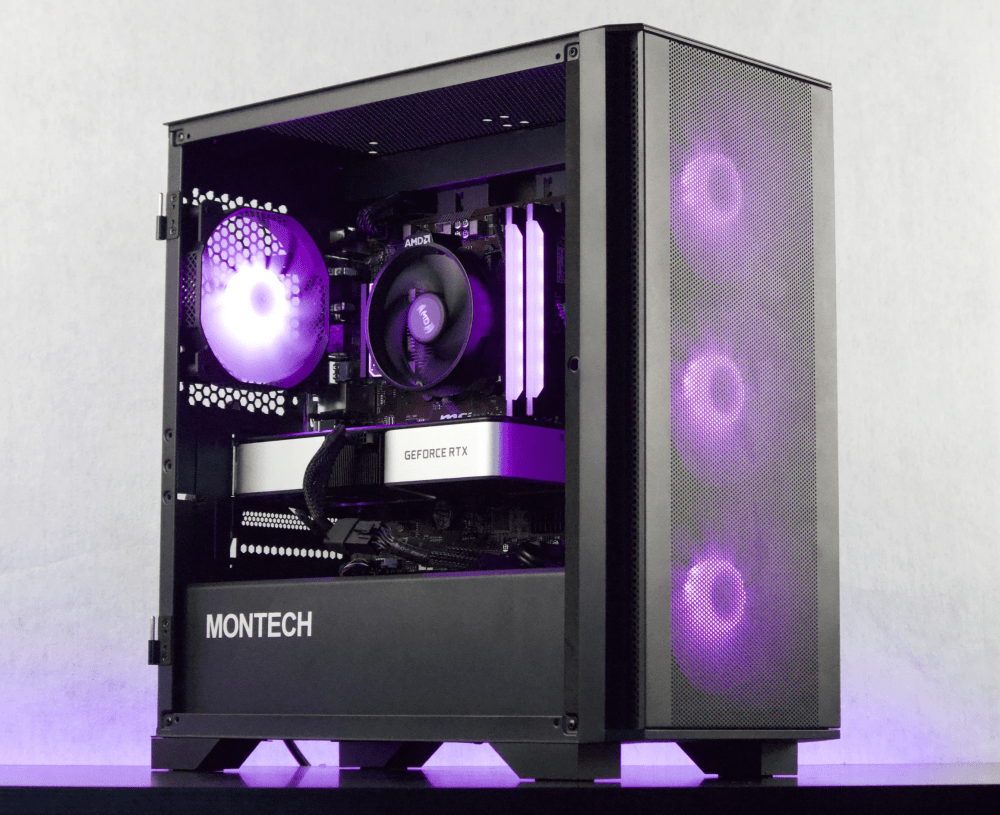Looking to upgrade your CPU? Check out Jawa for killer deals on new and used processors.
Welcome to our blog post on how to safely ship a CPU. Whether you're selling a used CPU or sending it for repair, ensuring its safe arrival is crucial. CPUs are delicate electronic components that require careful handling during transportation to avoid damage. In this guide, we will walk you through the process of properly packaging and shipping a CPU to ensure it reaches its destination unharmed.
Understanding the Basics: Importance of Proper CPU Shipping
Before we dive into the specifics, it's essential to understand why proper CPU shipping is important. CPUs are sensitive to static electricity, shock, and physical stress. Mishandling or inadequate packaging can result in irreparable damage, rendering the CPU useless. By following the right shipping procedures, you can minimize the risk of damage and ensure your CPU arrives in perfect condition.
Preparing the CPU for Shipping
To ensure your CPU is ready for transportation, proper packaging is crucial. In this section, we will discuss the importance of proper packaging and the materials needed for securing the CPU.
Why Proper Packaging is Crucial
Proper packaging is critical to protect the CPU from external shocks, static electricity, and moisture. It acts as a shield, preventing any potential damage during transit. We will explore the various packaging options and techniques to keep your CPU safe throughout the shipping process.
Materials Needed for Packaging
Choosing the right packaging materials is essential for protecting the CPU from harm. We will discuss the anti-static materials, such as anti-static bags, foam, and bubble wrap, that are necessary for packaging your CPU securely.
The Process of Securing the CPU
In this section, we will guide you through the step-by-step process of securing the CPU in its packaging. We will cover the proper placement of the CPU in the packaging, securing it with padding, and sealing the package to ensure it remains intact during transit.
Choosing the Right Shipping Carrier
Once your CPU is securely packaged, selecting the right shipping carrier is crucial to ensure a safe and timely delivery. In this section, we will discuss the factors to consider when choosing a shipping service, including cost, delivery times, insurance options, and tracking capabilities.
Packing the CPU for Shipment
With the shipping carrier selected, it's time to pack your CPU for shipment. We will provide detailed instructions on using anti-static materials, securing the CPU within the box, and finalizing the package to withstand the rigors of transportation.
Post-Shipment Process
After your CPU is sent off, it's important to stay informed about its progress and communicate with the recipient. In this final section, we will discuss how to track your shipment, maintain communication with the recipient, and provide guidance on what to do in case of damages or loss during transit.
Understanding the Basics: Importance of Proper CPU Shipping
Shipping a CPU may seem like a straightforward task, but it is essential to understand the importance of proper CPU shipping to ensure the safe arrival of your valuable component. In this section, we will delve into the basics of CPU shipping and highlight why it is crucial to handle this process with care.
1.1 The Fragility of CPUs
CPUs, or Central Processing Units, are delicate electronic components that serve as the brain of a computer. They are highly sensitive to physical stress, static electricity, and temperature changes. Any mishandling during shipping can result in irreparable damage, rendering the CPU unusable.
1.2 The Risks of Improper CPU Shipping
Improper CPU shipping can lead to various risks, including:
-
Physical Damage: CPUs can be easily damaged if they are not properly secured and protected during transit. Physical impacts, such as drops or rough handling, can cause internal components to shift or break, leading to malfunction or failure.
-
Static Electricity: CPUs are susceptible to damage from static electricity. When exposed to static charges, sensitive electrical components within the CPU can be permanently damaged. This risk increases if proper anti-static precautions are not taken during packaging and handling.
-
Moisture and Humidity: Exposure to moisture and high humidity levels can corrode the delicate circuitry of a CPU. If not adequately protected, these environmental factors can cause irreversible damage, affecting the CPU's performance and reliability.
1.3 The Importance of Proper Packaging
Proper packaging is vital to protect the CPU from the risks mentioned above. It acts as a shield against physical shocks, static electricity, and moisture, ensuring the CPU remains intact and functional throughout the shipping process.
By using appropriate packaging materials and techniques, you can minimize the likelihood of damage and increase the chances of a successful delivery. Neglecting proper packaging can result in costly repairs or the need to replace the CPU altogether.
1.4 Ensuring Warranty and Insurance Coverage
Another reason to focus on proper CPU shipping is to maintain warranty coverage and ensure insurance claims can be made if necessary. Many CPU manufacturers and shipping carriers have specific guidelines for packaging and handling, and failure to comply with these requirements may void any warranty or insurance coverage.
Understanding the basics of CPU shipping and the risks involved emphasizes the need for proper handling and packaging. In the following sections, we will guide you through the step-by-step process of preparing your CPU for shipment, choosing the right shipping carrier, packaging the CPU securely, and managing the post-shipment process. By following these guidelines, you can ship your CPU with confidence, knowing that it is protected and will reach its destination safely.
Preparing the CPU for Shipping
When it comes to shipping a CPU, proper preparation is key to ensure its safe transportation. In this section, we will discuss the necessary steps to prepare your CPU for shipping, including the importance of proper packaging, the materials needed, and the process of securing the CPU.
- Why Proper Packaging is Crucial
Proper packaging plays a vital role in safeguarding the CPU during transit. It helps protect the CPU from physical damage, static electricity, and environmental factors, ensuring its integrity upon arrival. By understanding the significance of proper packaging, you can take the necessary precautions to minimize the risk of damage.
- Materials Needed for Packaging
Before you begin packaging your CPU, gather the necessary materials to ensure its safe transport. Some essential materials include:
-
Anti-static bags: These bags are designed to prevent static electricity from damaging the CPU. They provide a protective layer and should be used throughout the packaging process.
-
Bubble wrap or foam padding: These materials serve as shock absorbers, cushioning the CPU and protecting it from impacts during transit.
-
Cardboard box: Choose a sturdy box that is slightly larger than the CPU to allow for proper padding and prevent movement inside the package.
-
Packing tape: Use high-quality packing tape to secure the box and ensure it remains intact during shipping.
-
The Process of Securing the CPU
Now that you have gathered the necessary materials, it's time to secure the CPU within the packaging. Follow these steps to ensure a secure and well-protected CPU:
-
Step 1: Power down and disconnect the CPU: Before packaging, make sure to power down the computer and disconnect the CPU from any power source or other components.
-
Step 2: Clean the CPU: Use a soft, lint-free cloth to gently clean the CPU and remove any dust or debris. This step helps prevent potential issues during shipping.
-
Step 3: Place the CPU in an anti-static bag: Carefully insert the CPU into an anti-static bag, ensuring that all pins and connectors are protected. Seal the bag to prevent any exposure to static electricity.
-
Step 4: Add protective padding: Place the anti-static bag containing the CPU in the center of the cardboard box. Surround it with bubble wrap or foam padding to provide a cushioning layer, preventing any movement or impacts during transit.
-
Step 5: Secure the box: Close the cardboard box and seal it securely with packing tape. Make sure all seams are properly sealed to prevent the box from opening during shipping.
By following these steps, you can effectively prepare your CPU for shipping, ensuring its safety during transportation. In the next section, we will discuss how to choose the right shipping carrier to further enhance the security of your CPU shipment.
Choosing the Right Shipping Carrier
Choosing the right shipping carrier is a crucial decision when it comes to safely shipping your CPU. The shipping carrier you select will determine the quality of service, the cost of shipping, and the level of security provided during transit. In this section, we will explore the factors to consider when choosing a shipping service and provide guidance on finding the best carrier for your CPU shipment.
- Factors to Consider when Choosing a Shipping Service
When selecting a shipping carrier, keep the following factors in mind:
-
Reliability: Choose a shipping carrier with a proven track record of reliable service. Look for carriers that have a reputation for delivering packages safely and on time.
-
Security: Ensure that the shipping carrier has security measures in place to protect your CPU from theft or damage during transit. This can include tracking systems, insurance options, and secure handling procedures.
-
Speed of Delivery: Consider the urgency of your shipment and choose a carrier that can meet your desired delivery timeline. Some carriers offer expedited shipping options for faster delivery, while others may have longer transit times but offer cost savings.
-
International Shipping: If you are shipping your CPU internationally, verify that the shipping carrier has experience and expertise in handling international shipments. They should be knowledgeable about customs regulations, documentation requirements, and any additional fees or taxes that may apply.
-
Customer Support: Look for a shipping carrier with reliable customer support that can assist you with any inquiries or issues that may arise during the shipping process. Prompt and helpful customer service can make a significant difference in resolving any problems that may occur.
-
Comparing Costs and Delivery Times
Consider the cost and delivery time options provided by different shipping carriers. While some carriers may offer lower shipping rates, their delivery times may be longer. Evaluate your budget and timeline to determine the best balance between cost and delivery speed for your specific needs.
- Insurance and Tracking Options
Check whether the shipping carrier offers insurance coverage for your CPU shipment. Insurance can provide financial protection in case of damage, loss, or theft during transit. Additionally, ensure that the carrier provides a tracking service so that you can monitor the progress of your shipment and have peace of mind knowing its whereabouts.
By carefully considering these factors, you can make an informed decision when choosing the right shipping carrier for your CPU. In the next section, we will discuss the process of packing the CPU for shipment, ensuring it is adequately protected during transit.
Packing the CPU for Shipment
Properly packing the CPU for shipment is crucial to ensure its safety during transit. In this section, we will guide you through the step-by-step process of packing your CPU securely, using anti-static materials, and finalizing the package for shipment.
- Using Anti-Static Materials
Anti-static materials are essential for protecting the CPU from potential damage caused by static electricity. Follow these steps to utilize anti-static materials effectively:
-
Step 1: Prepare an anti-static workspace: Find a clean, dry, and static-free area to work on. Avoid surfaces that generate static electricity, such as carpets or plastic.
-
Step 2: Wear an anti-static wrist strap: To prevent static discharge, wear an anti-static wrist strap connected to a grounded surface. This will help dissipate any static electricity from your body.
-
Step 3: Use an anti-static mat: Place an anti-static mat on your workspace. This mat provides an additional layer of protection against static electricity.
-
Step 4: Handle the CPU with care: When handling the CPU, avoid touching the gold contact pins or any sensitive components. Hold the CPU by its edges to prevent damage from oils or fingerprints.
-
Securing the CPU in the Box
After preparing the anti-static workspace, it's time to secure the CPU in the packaging. Follow these steps to ensure the CPU remains protected:
-
Step 1: Place the CPU in an anti-static bag: Carefully insert the CPU into an anti-static bag, ensuring that all pins and connectors are protected. Seal the bag to prevent any exposure to static electricity.
-
Step 2: Position the CPU in the center of the box: Place the anti-static bag containing the CPU in the center of the cardboard box. Ensure there is enough space around the CPU to add protective padding.
-
Step 3: Add cushioning material: Surround the CPU with bubble wrap or foam padding to provide a protective cushioning layer. Fill any empty spaces in the box to prevent the CPU from moving during transit.
-
Step 4: Secure the box: Close the cardboard box and seal it securely with packing tape. Make sure to reinforce all seams and corners to ensure the box remains intact during shipping.
-
Finalizing the Package for Shipment
Before sending off the package, take the following steps to ensure it is adequately prepared for shipment:
-
Step 1: Label the package: Clearly label the package with the shipping address, return address, and any necessary tracking numbers or shipping labels provided by the shipping carrier.
-
Step 2: Add additional layers of protection: For added security, consider wrapping the sealed box with additional layers of bubble wrap or placing it in a larger box with padding for extra cushioning.
-
Step 3: Insure the package: Depending on the value of the CPU, consider purchasing additional insurance coverage from the shipping carrier to protect against loss or damage during transit.
By following these steps, you can effectively pack your CPU for shipment, ensuring it is adequately protected from static electricity, physical impact, and other potential hazards. In the next section, we will explore the post-shipment process, including tracking your shipment and managing communication with the recipient.
Post-Shipment Process
Once your CPU is shipped, there are important steps to take during the post-shipment process to ensure a smooth delivery and address any issues that may arise. In this section, we will discuss tracking your shipment, communicating with the recipient, and what to do in case of damages or loss.
- Tracking Your Shipment
Most shipping carriers provide tracking services that allow you to monitor the progress of your CPU shipment. It is essential to regularly check the tracking information to stay informed about the whereabouts of your package. Follow these steps to track your shipment effectively:
-
Step 1: Locate the tracking number: Retrieve the tracking number provided by the shipping carrier. This number is typically found on the shipping label or in the confirmation email.
-
Step 2: Access the tracking information: Visit the shipping carrier's website or use their mobile app to enter the tracking number. This will provide you with real-time updates on the status and location of your shipment.
-
Step 3: Monitor the progress: Regularly check the tracking information to stay informed about any delays, estimated delivery dates, or potential issues with the shipment.
-
Communicating with the Recipient
It is essential to maintain communication with the recipient of the CPU shipment to ensure a successful delivery. Here are some important considerations:
-
Share the tracking information: Provide the recipient with the tracking number and instructions on how to track the shipment. This will allow them to monitor its progress and anticipate its arrival.
-
Ensure someone is available for delivery: Coordinate with the recipient to ensure someone will be available to receive the package upon delivery. This will prevent any delays or potential issues with delivery attempts.
-
Provide contact information: Share your contact information with the recipient in case they need to reach out to you regarding the shipment. This will facilitate communication and address any concerns or questions they may have.
-
What to Do in Case of Damages or Loss
In unfortunate situations where the CPU is damaged or lost during transit, it is important to know how to proceed. Follow these steps:
-
Step 1: Document the damage: If the CPU arrives damaged, take detailed photos of the packaging and the damaged CPU as evidence. This will be useful when filing a claim with the shipping carrier or insurance provider.
-
Step 2: Contact the shipping carrier: Notify the shipping carrier immediately about the damage or loss. Follow their instructions on filing a claim and provide all necessary documentation and evidence.
-
Step 3: Work with the recipient: Collaborate with the recipient to gather any additional information or documentation required for the claims process. Maintain open communication to resolve the issue promptly.
By actively tracking your shipment, maintaining communication with the recipient, and taking appropriate steps in the event of damages or loss, you can effectively manage the post-shipment process and ensure a positive outcome.





